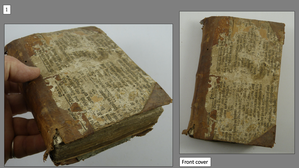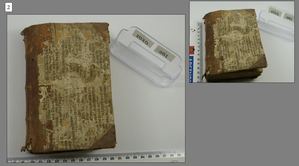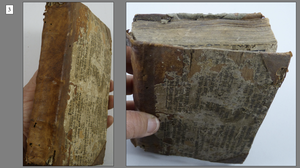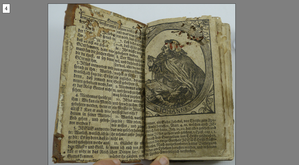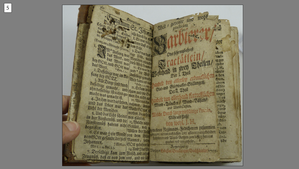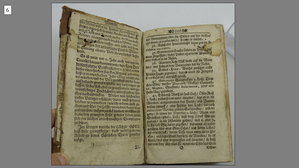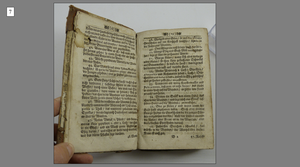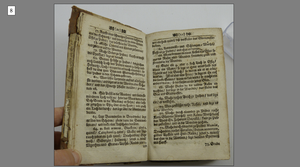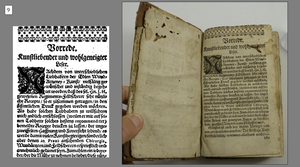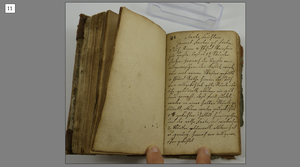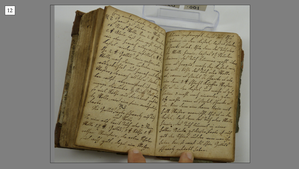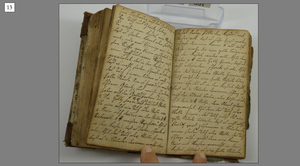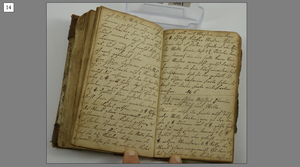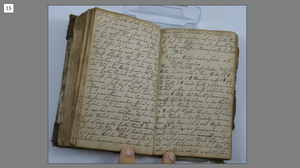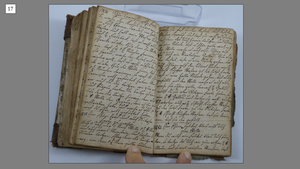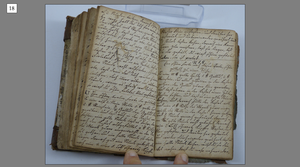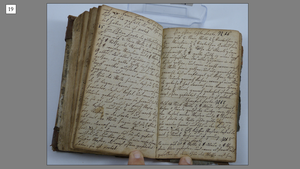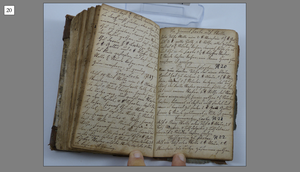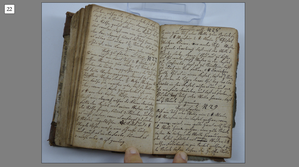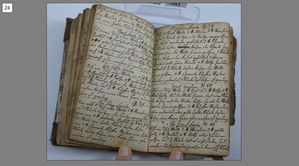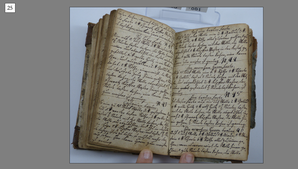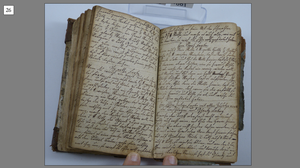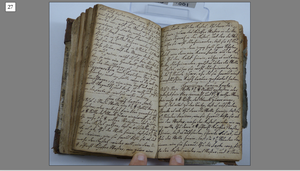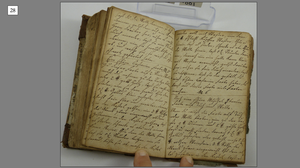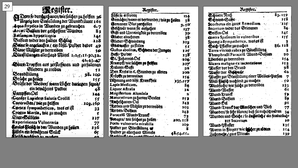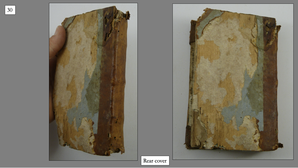This Page forms part of the overall Zebra-ProjectBy clicking on the following Link a list of all Zebra-Project tabbed pages will be displayed. |
Return to: Zebra-Project Publication Collections
Glenn LIEBELT Photographic Collection & Other Archival Material
1709 BARBIERER or BARBER handbook
314 year old fragile book, leather bound with many hand written pages in German script.
The following information was transcribed & translated by Dr Lois Zweck, 2020.
[handwritten notes & remedies]
Aim of Article
Table of Contents
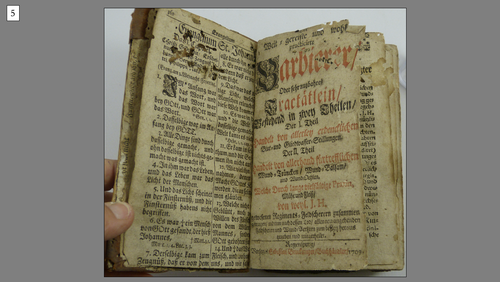 This page transcribed & translated on far right
This page transcribed & translated on far right
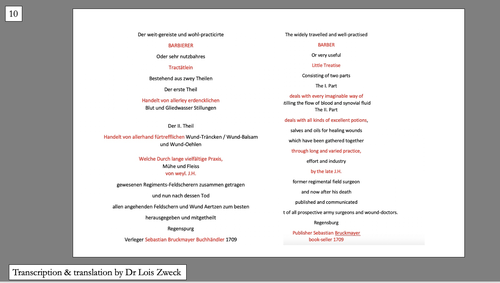 Transcribed & translated by Dr Lois Zweck
Transcribed & translated by Dr Lois Zweck
Binding: The worn binding has clearly been repaired or renewed at least once, as indicated by the sheet of paper stuck sideways on the outside cover. The page stuck on the inside cover is from a standard German Bible, St Johns Gospel, Chapter 3.
The next sheet is the beginning of Johns Gospel, with a sketch of the Evangelist and n the next page the first chapter. It is likely that this is just binding material to make up for the lost front pages of the Barber Handbook. The page stuck on the outside seems to be from the same Bible: there may once have been a leather cover over all of this binding.
The Barbers' Handbook: printed in 1709, worn, discoloured and fragile - see full title above. At that time barbers were also more-or-less untrained minor surgeons, considered competent in a limited set of mechanical skills of the same level as barbering skills, especially as army surgeons dealing with wounds on the battlefield. A preface to the 'art loving and well-disposed reader' [art in the sense of skill] introduces a collection of treatments for stopping bleeding and healing wounds gathered by a regimental surgeon named only as J.H., and published posthumously by a friend to whom he commended them on his death-bed.
There are 134 numbered and even more unnumbered prescriptions, many repeated - as though JH had left several manuscripts which were simply combined unedited. The recipes make use of a vast range of animal, vegetable and mineral substances, mostly uses as powders sprinkled onto wounds to stop bleeding: dried or burned animal parts of even droppings: feathers of particular birds, the dried spawn of green frogs, the liver of a hare burned on a brick, the dried skull bone of a man or woman-to match the gender of the patient-crushed to a powder...Fortunately the drinks administered for healing wounds are more often herbal and mixed with beer or wine, though the writer does admit that one made from horse droppings may be less palatable.
Similar ointments and oils are applied directly to the wounds, and the turpentine included in a number probably did function as a disinfectant [and surely less painful than pouring boiling oil into a wound which seems to have been standard treatment until the 16th century]. Many are claimed to be infallible.
A final section urges that the plants used must be collected at the stipulated times or they will not be efficacious.
A clean clear digitised copy of the original book can be found here:
https://books.google.com.au/books?id=MFZWAAAAcAAJ&printsec=
frontcover&source=gbs_ge_summary_r&cad=0#v=onepage&q&f=false
The recipe collections however seem centuries apart, with the treatment of bleeding and wounds sounding for the most part more closely related to witchcraft than science, while the dyes sound like they could be used today, if it weren't for the invention of synthetic dyes in the meantime.
Scanned by J Haynes, transcribed & translated by Dr Lois Zweck. 2020.

